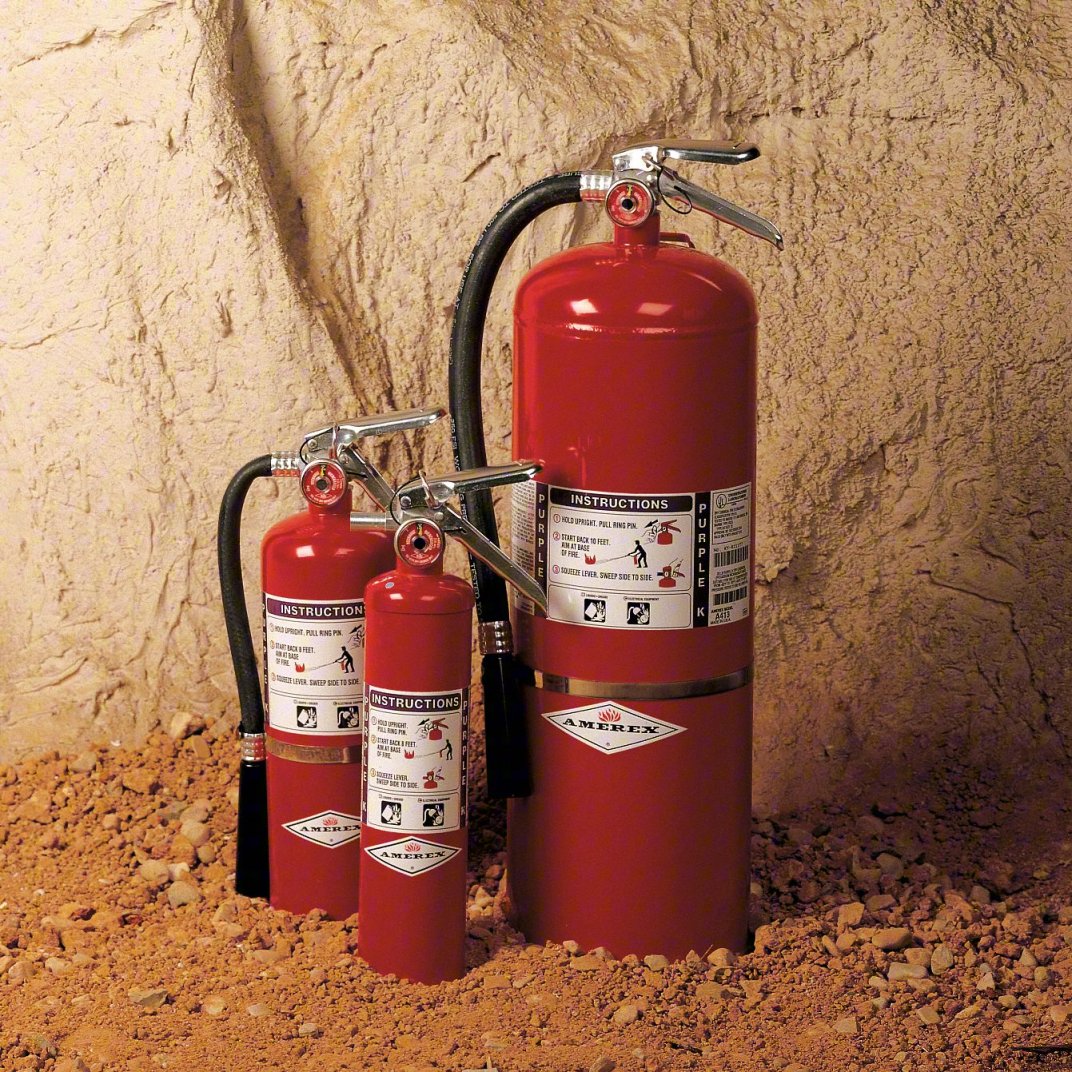Fire extinguishers are essential safety devices designed to extinguish or control fires in their early stages. There are several classes of fire extinguishers, each designed to combat specific types of fires. The classification is based on the type of materials or substances that are burning. The five main classes of fire extinguishers are:
- Class A: Ordinary Combustibles
- Suitable for fires involving ordinary combustible materials such as wood, paper, cloth, and plastics.
- Typically use water or foam as extinguishing agents.
- Best for home use when dealing with common household fires.
- Class B: Flammable Liquids and Gases
- Designed for fires fueled by flammable liquids (e.g., gasoline, oil, grease) and gases (e.g., propane, natural gas).
- Uses agents like foam, CO2 (carbon dioxide), or dry chemical powder to smother the fire or inhibit combustion.
- Useful in homes with gas appliances or garages where flammable materials are stored.
- Class C: Electrical Fires
- Intended for fires involving electrical equipment, such as wiring, outlets, and appliances.
- Utilizes non-conductive agents like CO2 or dry chemical powder to suppress the fire.
- Valuable in areas with electrical equipment like kitchens and workshops.
- Class D: Combustible Metals
- Designed for fires involving combustible metals, like magnesium, titanium, or sodium.
- Uses special extinguishing agents, such as dry powder or sand, to absorb the heat and prevent chemical reactions.
- Not commonly found in households and more applicable to industrial settings.
- Class K: Cooking Oils and Fats
- Specifically for fires originating from cooking oils and fats, common in kitchens.
- Utilizes a special high-alkaline wet chemical to saponify the fats and cool the fire.
- Important in residential kitchens and commercial cooking areas.
The best fire extinguisher to have in your home depends on the specific fire risks you face. In most homes, a combination of Class A, B, and C extinguishers is recommended for general fire protection. A multi-purpose ABC fire extinguisher is readily available and covers a wide range of potential fire hazards. This type of extinguisher is perfect to have in the garage or common areas of the home. In kitchens, consider investing in a K class extinguisher and keeping it near where you cook. Here are some considerations when choosing a fire extinguisher for your home:
- Size and Weight: Choose an extinguisher that you and your family members can easily handle. A 5-pound extinguisher is suitable for many home applications.
- Location: Place extinguishers in easily accessible locations near potential fire hazards, such as the kitchen, garage, and workshop. Mount them on the wall or keep them in cabinets with clear signage.
- Maintenance: Regularly inspect and maintain your extinguishers according to the manufacturer’s recommendations. Ensure they are pressurized and have not exceeded their expiration date.
- Training: Familiarize yourself and your family with the proper use of fire extinguishers. The P.A.S.S. (Pull, Aim, Squeeze, Sweep) technique is a common method for using extinguishers effectively.
- Consideration of Class K: If you have a kitchen with a deep-fryer or use a lot of cooking oil, consider having a Class K extinguisher nearby.
Remember that fire extinguishers are only effective for small fires and early-stage fires. In case of a larger or rapidly spreading fire, always prioritize safety and evacuate your home while calling emergency services. When in doubt, evacuate, call 9-1-1, and let the firefighter go in and extinguish the fire.

Comments are closed